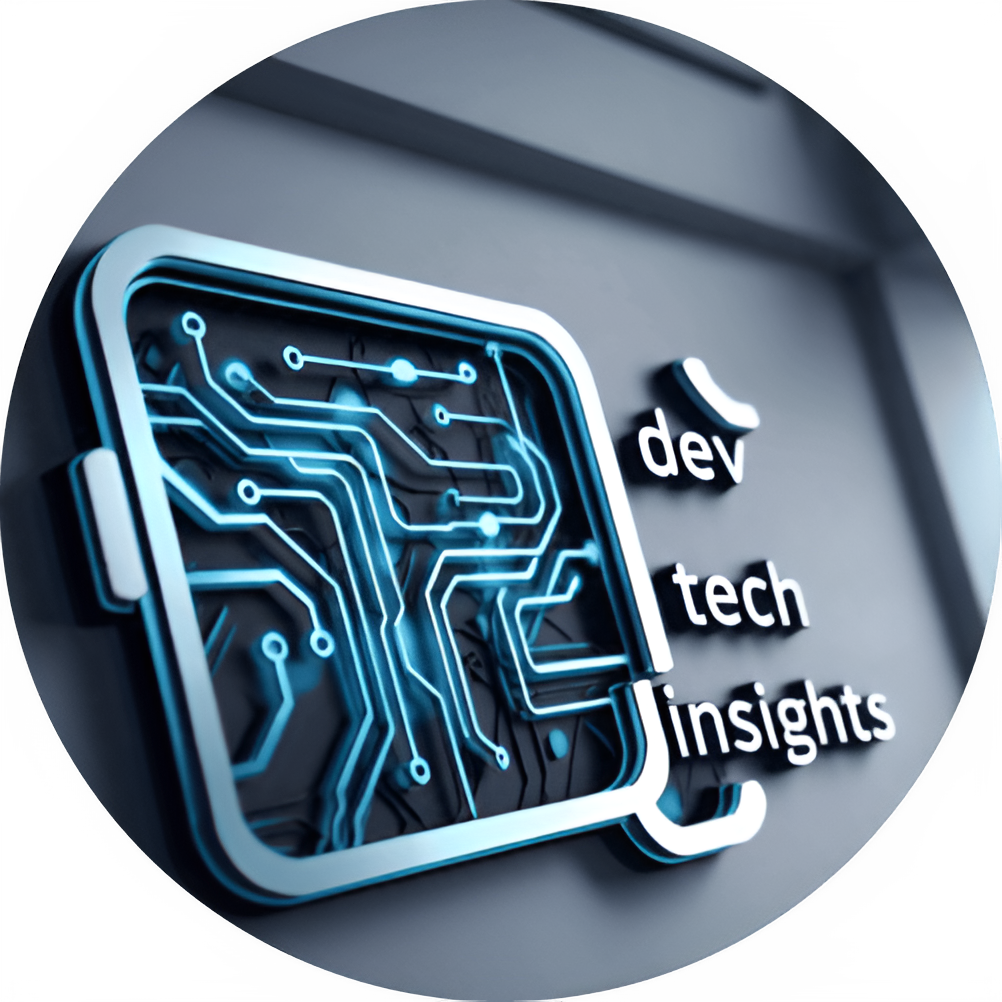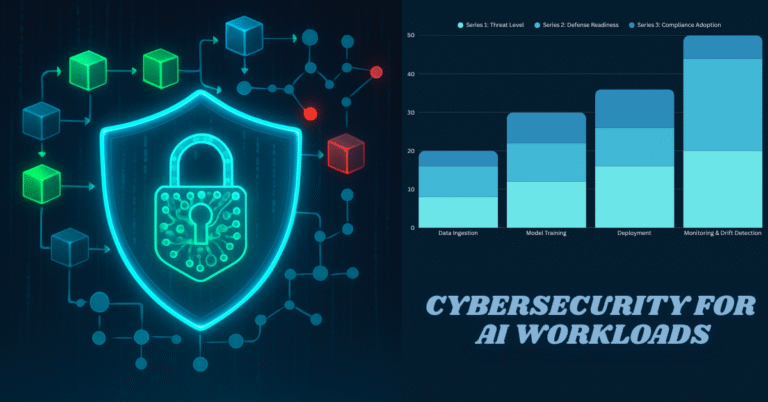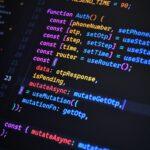
Exploring the Latest Trends in Technology and Programming for Enthusiasts|Dev Tech Insights
Introduction to Technology Trends
The rapidly evolving realm of technology is characterized by the constant emergence and integration of new trends that significantly influence various industries and programming practices. These trends encompass a wide array of advancements, including artificial intelligence (AI), machine learning, cloud computing, the Internet of Things (IoT), and blockchain technology. For technology enthusiasts and professionals, staying informed about these developments is not merely beneficial; it is crucial for remaining relevant in today’s competitive landscape. As the technological landscape continues to change at an unprecedented pace, understanding these trends allows individuals to anticipate future shifts and adapt accordingly.
Moreover, technology trends play a pivotal role in shaping business strategies, driving innovation, and enhancing productivity across various sectors. Organizations that embrace and implement these trends are often better positioned to compete in the market, leveraging the latest advancements to improve their operations and service offerings. This connection between technology trends and industry success underlines the importance for programming professionals to continually refine their skills and knowledge base. By staying updated, they can effectively respond to new challenges and opportunities, ensuring that they remain integral players in the tech ecosystem.
Additionally, by engaging with the latest trends, tech enthusiasts can explore new programming languages, tools, and methodologies that not only optimize existing processes but also foster creativity and innovation. Continuous learning and adaptation become indispensable, as the technologies that dominate today’s market can quickly be replaced by emerging alternatives. Thus, understanding and embracing technology trends is essential for anyone seeking to thrive in the dynamic world of technology and programming.
Artificial Intelligence and Machine Learning Innovations
The landscape of artificial intelligence (AI) and machine learning (ML) continues to evolve at a rapid pace, presenting numerous innovations that capture the interest of technology enthusiasts. Recent breakthroughs in natural language processing (NLP) have significantly improved how machines understand and generate human language, leading to tools that can engage in more nuanced conversations and provide context-aware responses. Techniques such as transformer architectures and large language models, including prominent systems like OpenAI’s ChatGPT, showcase the ability of AI to comprehend complex prompts and generate coherent text, revolutionizing customer interactions and content creation.
In the realm of computer vision, advancements have enabled machines to interpret and understand visual data with remarkable accuracy. Developments in convolutional neural networks (CNN) have empowered applications ranging from real-time facial recognition to autonomous vehicle navigation. For example, companies like Tesla have utilized cutting-edge computer vision technologies to enhance their self-driving capabilities, incorporating machine learning algorithms that continuously adapt and improve from vast amounts of driving data.
With these advancements, it remains critical to consider the ethical implications tied to AI and ML. The rise of biased algorithms and concerns about privacy has prompted the establishment of ethical AI practices. Organizations are increasingly focusing on transparency, fairness, and accountability to mitigate risks and promote responsible AI development. For enthusiasts looking to dive deeper, resources and communities are readily available online, offering tools such as TensorFlow, PyTorch, and other frameworks that facilitate experimentation with AI models. Embracing these innovations not only empowers individuals to create impactful solutions but also contributes to a growing dialogue about the future of technology in society.
The Rise of No-Code and Low-Code Development Platforms
In recent years, no-code and low-code development platforms have become increasingly popular within the technology sector, revolutionizing how software applications are created. These platforms enable users with minimal or no programming experience to develop applications through intuitive interfaces, drag-and-drop functionalities, and visual programming tools. The appeal of this technology lies in its accessibility, allowing professionals across various industries to automate processes and create web and mobile applications without writing extensive lines of code.
The core benefit of no-code and low-code platforms is their ability to bridge the gap between technical and non-technical users. This democratization of software development empowers business analysts, marketers, and other professionals to take control of their projects, ultimately reducing reliance on IT departments. Organizations can experience faster development cycles, significantly lowering the time-to-market for new products and features. As a result, no-code and low-code solutions are rapidly being adopted by startups and established enterprises alike, seeking to optimize their workflows and enhance productivity.
Additionally, these platforms promote innovation among users by enabling the rapid prototyping of ideas. For instance, case studies reveal that companies leveraging no-code tools have successfully launched applications for customer relationship management (CRM), internal workflows, and data analysis without needing extensive development resources. One notable example is a financial services firm that used a low-code platform to develop a client onboarding application, reducing the onboarding time by 50%. Such instances illustrate the transformative potential no-code and low-code solutions have on the software development landscape.
In conclusion, as no-code and low-code platforms continue to grow in popularity, they represent a significant shift in how software applications are developed. By enabling more individuals to create and innovate, these platforms are set to shape the future of technology and programming, fostering a more inclusive environment for creativity and problem-solving in businesses worldwide.
Trends in Web Development: Frameworks and Technologies
In recent years, web development has evolved significantly, driven by advancements in technology and the changing needs of users. Many developers have turned to popular frameworks such as React, Vue.js, and Angular to create dynamic and interactive web applications. Each of these frameworks offers unique advantages, enabling developers to enhance user experiences and streamline the development process.
React, developed by Facebook, has gained traction due to its component-based architecture, which promotes reusability and maintainability. Its virtual DOM feature allows for faster updates and rendering, making applications more responsive. With a strong community and a plethora of libraries, React is often the go-to choice for developers looking to build scalable applications.
On the other hand, Vue.js has emerged as a favorite among developers seeking simplicity and flexibility. Its gentle learning curve makes it particularly appealing to newcomers in web development. Vue’s reactive components, along with its powerful ecosystem, facilitate the creation of sophisticated user interfaces with minimal effort. This framework is characterized by its progressive nature, allowing developers to incrementally adopt it in existing projects.
Angular, maintained by Google, offers a comprehensive solution for large-scale applications. It comes with built-in tools and features that cater to enterprise-level development, including dependency injection, two-way data binding, and a robust CLI. Angular’s structured approach enables teams to maintain code quality and manage complex applications effectively.
Another important trend in web development is the focus on responsiveness and performance. As users access websites through various devices, ensuring a seamless experience is crucial. The rise of Progressive Web Apps (PWAs) is noteworthy; these applications combine the best of web and mobile, offering offline access and push notifications, greatly enhancing user engagement. Additionally, advancements in serverless architecture have transformed how developers deploy web applications, allowing for more scalable and cost-efficient solutions.
Understanding these current trends in web development is vital for developers, as staying abreast of the most in-demand frameworks and technologies can significantly impact project success and user satisfaction.
Cybersecurity: Challenges and Solutions in the Tech Era
The realm of cybersecurity has grown increasingly critical as organizations face mounting threats from cybercriminals. In this technology-centric age, where reliance on digital platforms is ubiquitous, the significance of cybersecurity cannot be overstated. Cyberattacks have become more sophisticated, targeting vulnerabilities within systems and exploiting them to perpetrate fraud, steal sensitive data, or disrupt services. Therefore, it is vital for organizations and developers alike to stay ahead of these relentless threats.
Recent trends in cybersecurity highlight the necessity of adopting a proactive security posture. Organizations are increasingly investing in advanced threat detection tools, employing artificial intelligence (AI) and machine learning (ML) to identify and respond to potential breaches in real-time. These technologies enhance the ability to analyze vast amounts of data, enabling security teams to discern patterns indicative of malicious activity. Furthermore, the implementation of zero trust architecture—whereby verification is required from everyone accessing a system—has gained traction among enterprises seeking to reduce their attack surface.
The development of secure applications is another paramount aspect of contemporary cybersecurity practices. Incorporating security measures throughout the software development lifecycle (SDLC) is essential in minimizing vulnerabilities. Developers are encouraged to adopt security frameworks such as OWASP, which provides guidelines for building secure web applications. Additionally, the importance of regular security audits and penetration testing cannot be neglected, as these practices help identify and rectify potential weaknesses before they are exploited.
As privacy concerns escalate, maintaining user data confidentiality is increasingly necessary. Application developers must focus on implementing strong encryption protocols and adhere to data protection regulations such as GDPR. This ensures not only compliance but also fosters user trust. The interplay between emerging technologies and cybersecurity creates a landscape that continuously evolves, necessitating both awareness and adaptation to safeguard against diverse cyber threats.
The Internet of Things (IoT) and Smart Technologies
The Internet of Things (IoT) has rapidly emerged as a transformative force that shapes the way we interact with devices and systems in our daily lives. At its core, IoT refers to the interconnection of physical devices over the internet, enabling them to communicate and exchange data. This interconnectedness has paved the way for significant advancements in smart home technologies, industrial applications, and many other sectors. One of the most notable trends is the proliferation of smart home devices, which include smart thermostats, lights, security systems, and appliances that can be controlled remotely. These technologies enhance convenience, improve energy efficiency, and elevate security for homeowners.
As IoT technology gains traction, industries are increasingly implementing IoT solutions to optimize their operations. For example, manufacturing companies employ IoT strategies to monitor equipment performance, predict maintenance needs, and enhance productivity through data analysis. Similarly, in agriculture, IoT sensors can facilitate precision farming, enabling farmers to monitor soil conditions and livestock health in real time. This shift towards data-driven decision-making is transforming traditional practices and ushering in a new era of efficiency.
For programming enthusiasts, the IoT domain offers a vast array of opportunities. Learning to code for IoT applications requires proficiency in languages such as Python, JavaScript, and C, as well as an understanding of data protocols and cloud integration. Engaging in IoT projects not only fuels creativity but also equips individuals with practical skills that are increasingly sought after in the job market. Challenges such as ensuring security and managing interoperability continue to necessitate innovative programming solutions, thereby fostering a vibrant community of developers dedicated to overcoming these hurdles.
As we move forward, the potential of IoT and smart technologies remains immense, promising a future where connectivity enhances our daily lives in unprecedented ways.
Future Outlook: Predictions for Technology and Programming
As we advance into an era of rapid technological evolution, the future of technology and programming holds significant promise. Experts forecast a diversification of skills and an increasing need for adaptability among professionals in these fields. Emerging technologies such as artificial intelligence (AI), machine learning (ML), and quantum computing are projected to dominate the landscape. These fields are expected to attract investment, transform industries, and redefine the programming paradigms that developers currently use. Additionally, the ongoing integration of AI tools into coding practices is likely to enhance developer productivity significantly.
The demand for new programming languages that seamlessly interface with advanced AI systems will likely rise. Furthermore, technologies such as blockchain are expected to gain traction beyond cryptocurrency, extending into areas like supply chain management and healthcare, offering enhanced transparency and security. This shift necessitates that programmers stay updated on these technologies to remain relevant in an evolving job market.
Cybersecurity is another vital area poised for growth, triggered by increased digitalization and the rising threat of cyberattacks. As organizations prioritize data protection, there will be a heightened demand for cybersecurity experts who possess robust programming skills. These professionals will not only be responsible for securing systems but also for developing innovative solutions to mitigate risks associated with emerging technologies.
Moreover, as the Internet of Things (IoT) continues to expand, programmers will need to develop skills applicable to integrated devices and smart technologies. Understanding how to write efficient code that can manage the data generated by millions of connected devices will be crucial. The interconnected nature of these devices will not only enhance consumer experiences but also necessitate developers to focus on interoperability and secure data exchange.
In conclusion, the future of technology and programming is poised for transformative changes driven by innovation and emerging trends. As new technologies evolve, professionals must embrace lifelong learning to adapt their skill sets, ensuring they remain competitive in an ever-changing landscape.For web development and Javascript related projects,Visit Mark Web AI.







